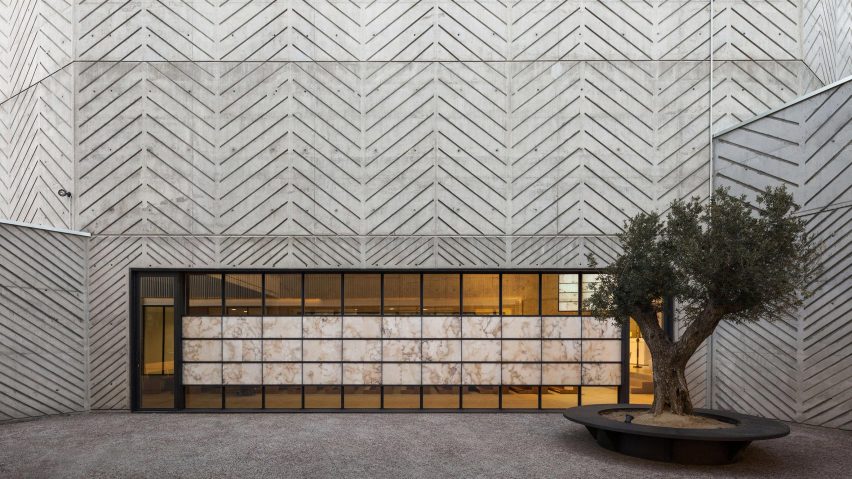
Gimeno + Guitart creates chevron-patterned concrete for church of Santa Maria Assumpta
Architecture studio Gimeno + Guitart has completed a church and parish centre in Tarragona, Spain, featuring concrete walls patterned with angular etchings.
The church of Santa Maria Assumpta is situated in the city's Bonavista neighbourhood on a plot adjacent to a plaza. It comprises a robust concrete polyhedron flanked by a translucent metallic volume.
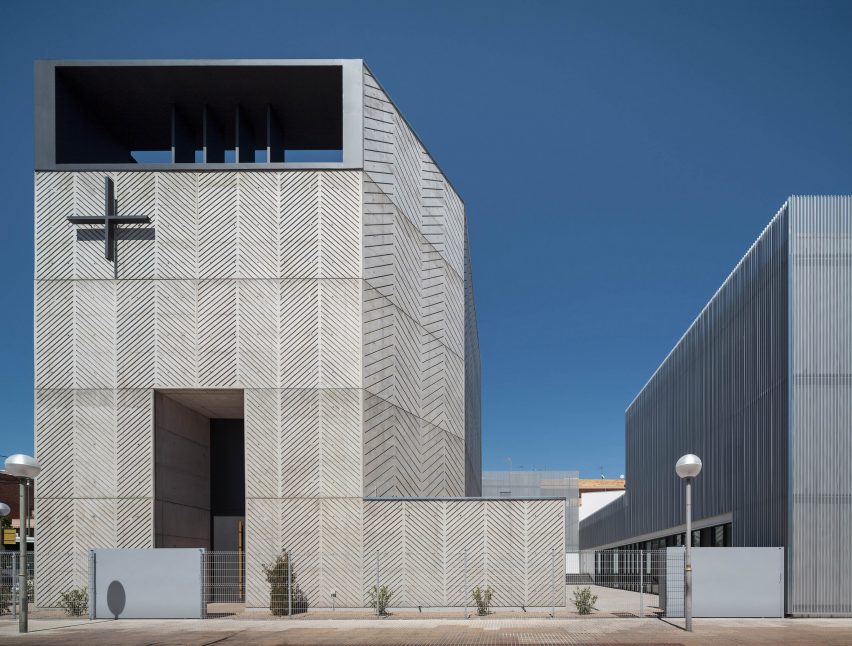
Madrid-based architects Daniel Gimeno and Miguel Guitart were keen for the building to function as a city monument that invites people to gather, but that also provides the congregation with a transcendental experience.
For the church building, which occupies the most visible part of the site, they decided to decorate the concrete walls with diagonal lines. Embossed into the concrete surfaces during the casting process, these create a chevron pattern that helps to accentuate the multi-sided form. They also add texture to the otherwise homogenous surfaces.
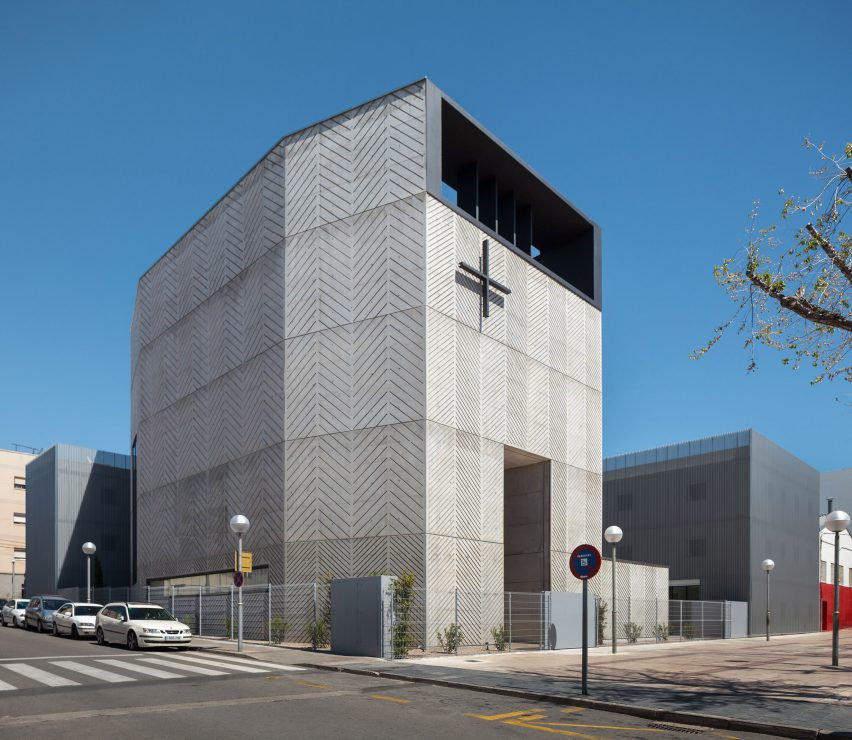
The parish centre extends in an L shape along two sides of the church and features a more neutral exterior cladding formed of vertical metal fins. This lower building contains classrooms, offices and residences.
"The horizontality of the soft metallic-skinned building, which hosts the parish centre, contrasts with the presence of the church as a rocky polyhedric mass that resembles a mineral formation," the architects said.
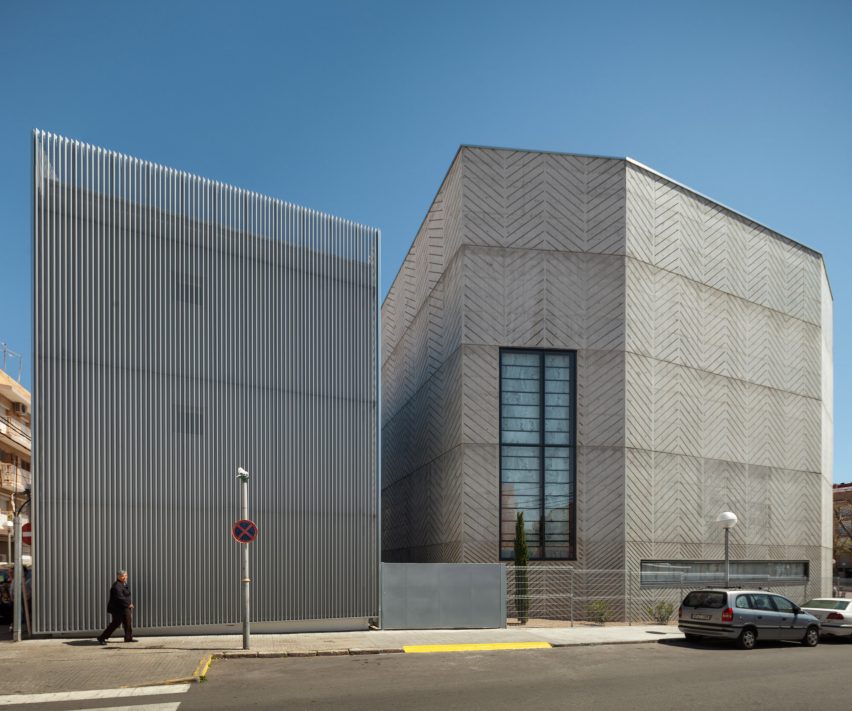
Entrances to the parish centre are located facing a private courtyard formed by the void between the two buildings.
This outdoor space is limited and organised by the sacristy and side access to the church, which both extend out from the base of the nave on one side.
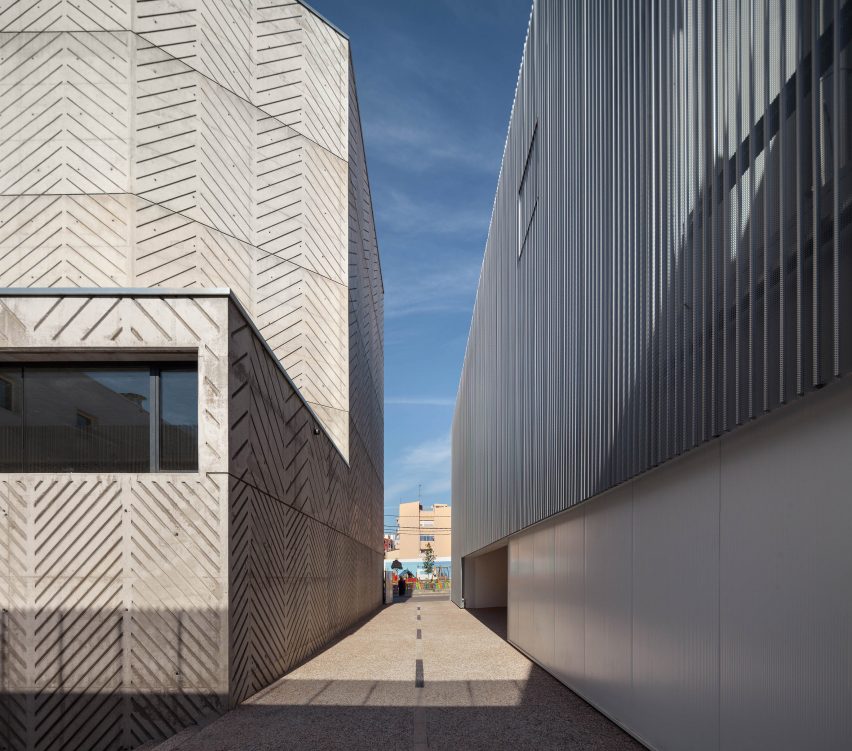
The courtyard functions as a communal area for use by visitors to both buildings and allows plenty of daylight to reach windows set behind the parish centre's metal cladding.
The church can be entered from the courtyard or through a large opening in the main facade fronting the plaza. Both routes into the building are designed to emphasise the transition towards the nave.
The large metal doors of the main entrance lead to a compressed space beneath the choir beyond which the main space is revealed, while the funnel-like form of the side entrance opens up towards the nave.
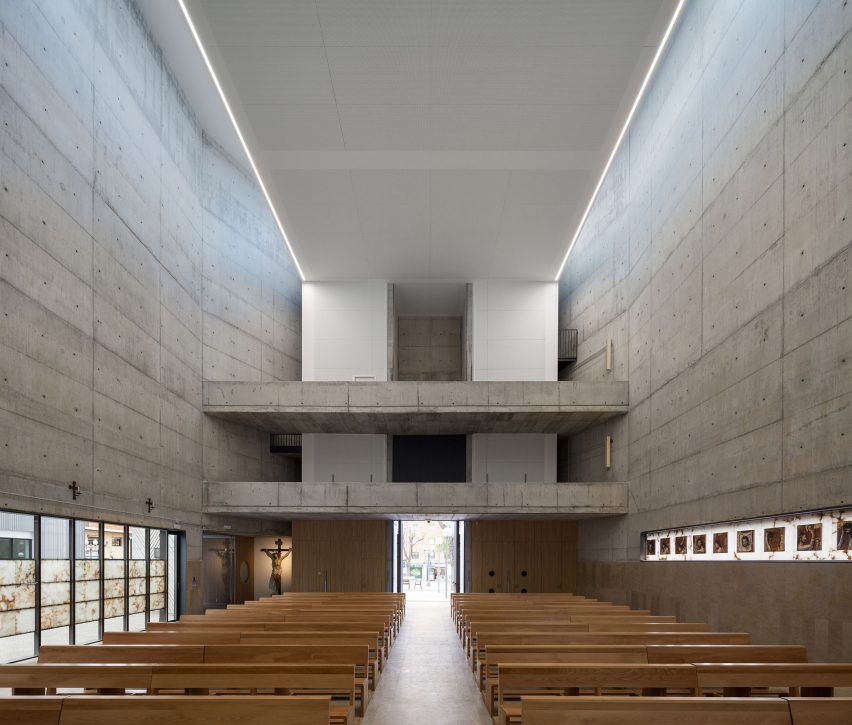
Once inside, light and scale are used to express the sacred qualities of the main hall. The concrete walls extend up towards a white ceiling and angle inwards at the rear, where a gilded wood backdrop frames a sculpture of the Virgin Mary.
"The dramatically high space inside the church is lit from two large hidden clerestory windows that run the whole length of the building," added Gimeno and Guitart.
"This vertical light stresses the space vertically and promotes a sense of weightlessness and spirituality in contrast to the hardness of the concrete envelope."
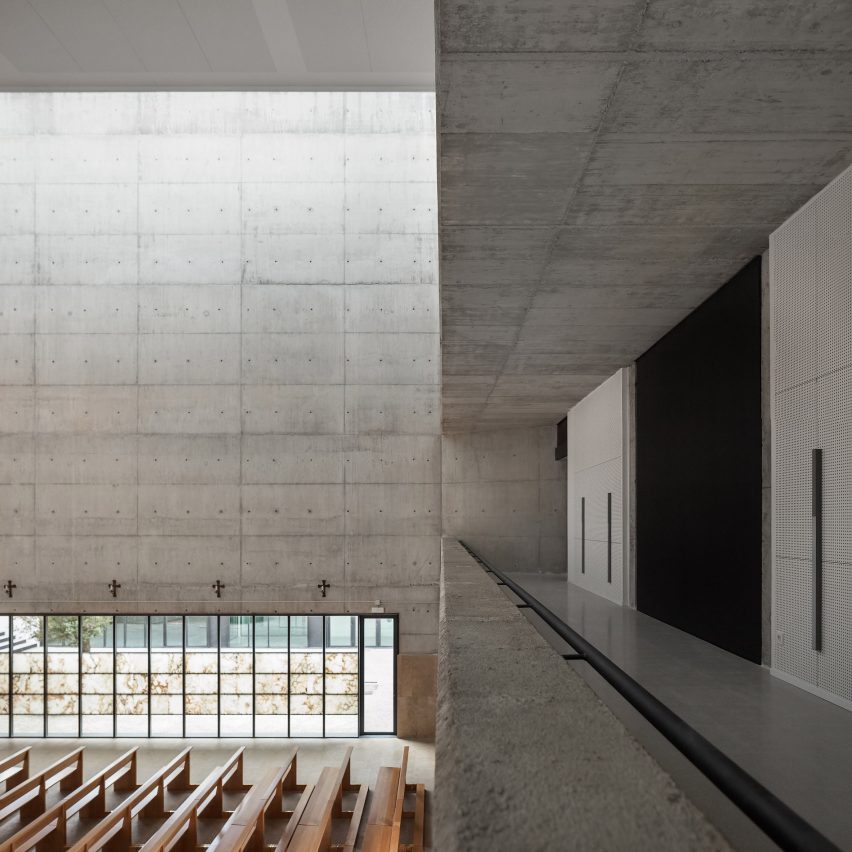
The austere concrete shell is also mitigated by the application of a warmer stone around the base of the walls.
Alabaster is used to filter light through a narrow opening sliced into one side of the space, and the window looking onto the courtyard opposite.
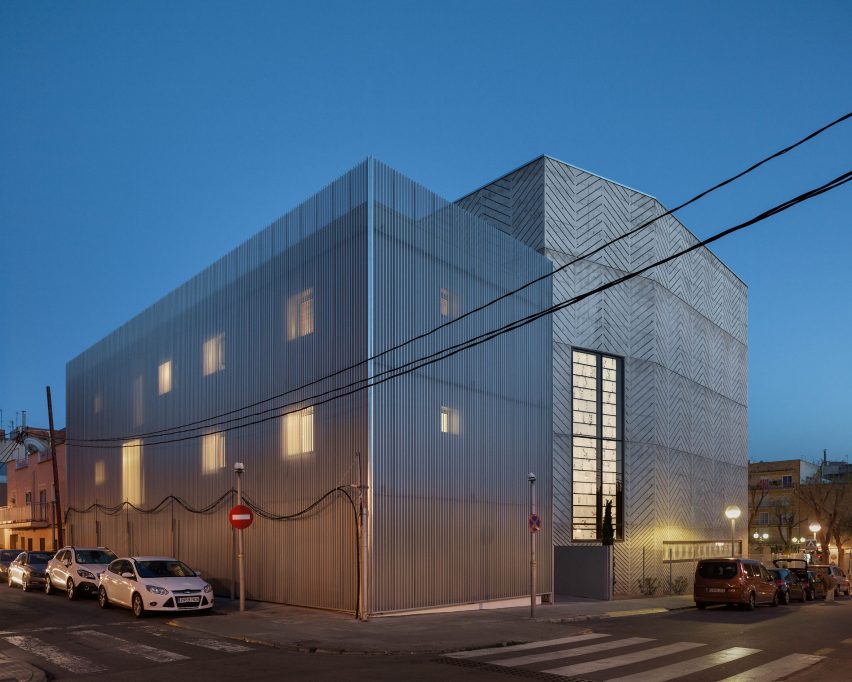
The contrast of manmade and natural materials together with the careful consideration of daylight and scale all contribute towards a neutral and calming backdrop for religious activity.
"The emphasis on the sparseness helps achieve a serene and profound place for everyone," the architects concluded.
"This is a style-less architecture that alludes to absolute and universal values and welcomes all who visit the church and parish centre in Bonavista."
Photography is by Pedro Pegenaute.